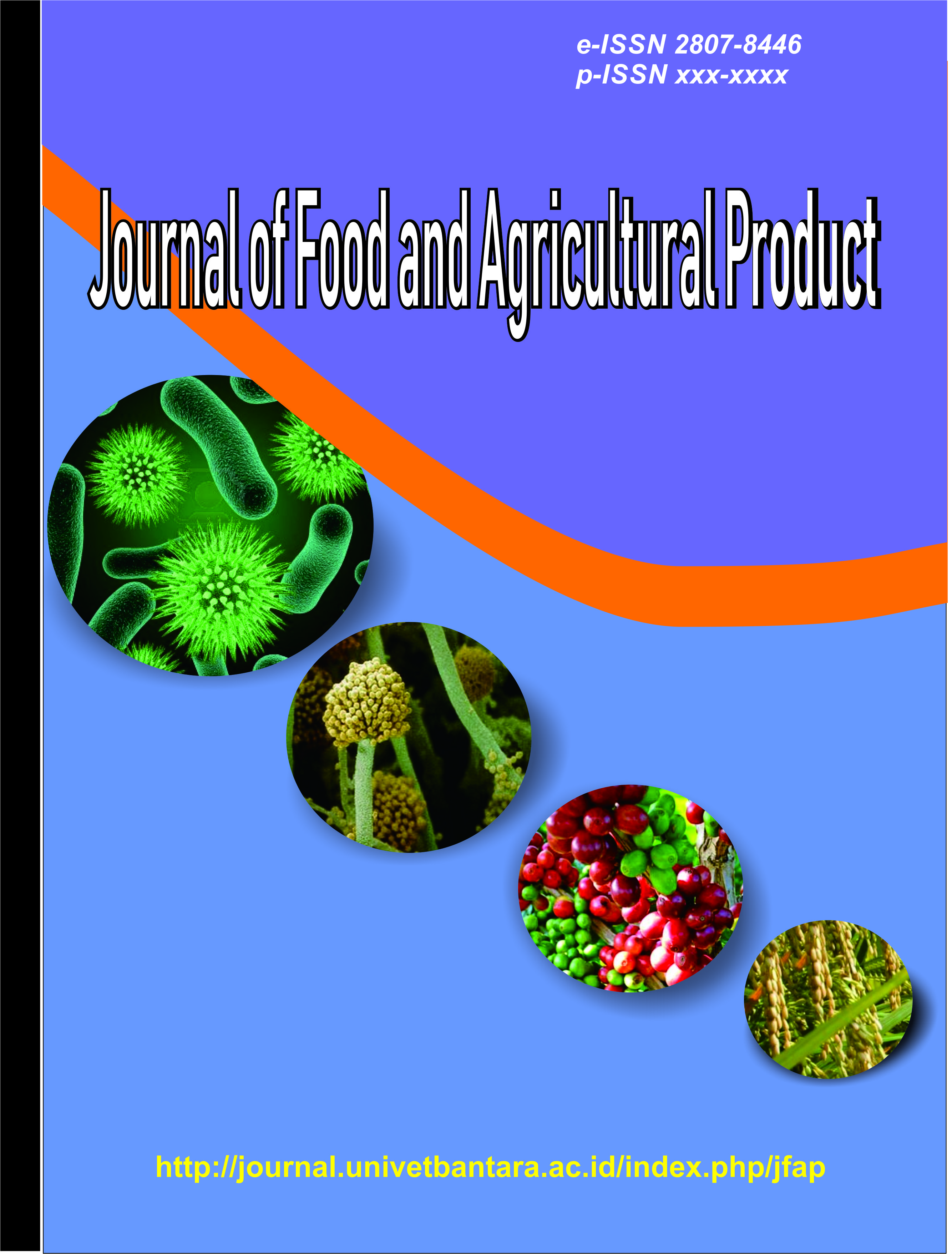Phytochemical Characteristics of Microencapsulated Purple Sweet Potato (Ipomoea batatas L.) Antin 3 Variety with Chitosan and Alginate
DOI:
https://doi.org/10.32585/jfap.v5i1.6288Abstract
Microencapsulation is one of the techniques used to protect and increase the stability of bioactive compounds contained in natural materials, such as purple sweet potato. Purple sweet potato variety Antin 3 contains various phytochemical compounds that have potential as a source of antioxidants, but these compounds are easily degraded by external factors. This study aims to evaluate the differences in phytochemical characteristics of microencapsulated purple sweet potato variety Antin 3 with chitosan and alginate dressing materials. Microencapsulation was done using spray drying method and characterization was done by measuring total phenol content, antioxidant activity, and anthocyanin. The research method used is an experimental method with a randomized block design (RBD) consisting of one factor, namely the difference in coating materials: chitosan and alginate. The results showed significant differences in phytochemical characteristics between the two coating materials, where alginate produced microencapsulation with higher levels of anthocyanin and total phenolic phenol compounds. However, results encapsulated with chitosan showed higher antioxidant activity although not significantly different. Alginate microencapsules also had smaller and more uniform particle size. These findings may provide further information regarding the choice of coating materials in the development of more stable and effective purple sweet potato-based products.
Keywords: microencapsulation of phytochemicals, bioactive stability, characterization of phenolic compounds
Downloads
Downloads
Published
How to Cite
Issue
Section
License
Copyright (c) 2025 Aldila putri, Anisa Rachma Sari, Mita Nurul Azkia

This work is licensed under a Creative Commons Attribution-NonCommercial-ShareAlike 4.0 International License.




